How reverse osmosis works: the principle of operation of fine water purification devices
Among household systems for preparing drinking water for consumption, a new option has recently appeared, which is called reverse osmosis. This set of filters and a special membrane costs a lot, but it can give odds to almost any analogue.
Does it make sense to fork out? To get the answer to this question, you need to find out how reverse osmosis works, and then correlate the costs and the result. With our help, the process of getting acquainted with an advanced treatment system will go much faster and more efficiently.
We have collected and systematized for you all the useful and reliable information about the membrane water treatment plant. To complete the perception, we supplemented the text material with diagrams, illustrations and videos with recommendations to future customers.
The content of the article:
Work reverse osmosis
The osmosis process is based on the property of water to level the level of impurities in solutions separated by a membrane. The holes in this membrane are so small that only water molecules can pass through them.
If in one part of such a hypothetical vessel the concentration of impurities is increased, water will begin to flow there until the liquid density in both parts of the vessel is equalized.
Reverse osmosis gives the exact opposite result. In this case, the membrane is used not to equalize the density of the liquid, but to collect clean water on one side and a solution saturated with impurities on the other. That is why such a process is called reverse osmosis.
All these chemical features are of little interest to buyers, especially those who are not too well versed in science. It is enough for them to understand that the center of the reverse osmosis system is a special membrane, the pores of which are so small that they do not pass anything that exceeds the size of a water molecule, and this is a significant part of the pollution contained in tap water.
Alas, the water molecule is not the smallest on earth, for example, chlorine molecules are much smaller, so they can also leak through the membrane. In addition, contact with large suspensions of this membrane is contraindicated. Its small pores during this exposure will quickly become clogged, and this element will have to be replaced immediately.

To prevent this from happening, the reverse osmosis system also includes three additional filtersby means of which water passes preliminary preparation. The membrane divides the partially purified water into two unequal parts. About a third of the incoming volume is pure water, which then enters the storage tank.
Another two-thirds of the volume of water is the part in which the pollution is concentrated. Such a concentrate is discharged into the sewer. There is usually a small container between the tank and the tap. A cartridge is installed here, which is designed to improve the quality of already purified water, for example, to saturate it with useful minerals.
Schematically, the principle of reverse osmosis can be described as follows:
- Water flows from the water system to the pre-filters.
- Then the fluid undergoes a reverse osmosis procedure.
- Purified water enters the storage tank.
- Concentrate containing filtered impurities is transported to the sewer.
- Pure water from the storage tank enters the tap for clean water directly or through additional devices.
Thus, the reverse osmosis system is a set of devices that provide the ability to obtain drinking water with a high degree of purification. Until recently, such systems were used mainly in industry, at public catering establishments in health facilities, etc.
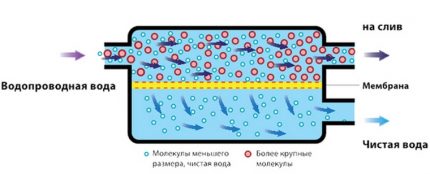
But due to growing demands on the quality of tap water in recent years, reverse osmosis systems designed for domestic use have gained popularity. They vary in configuration, performance, storage tank size, etc. Filters and membrane must be replaced periodically.
How to determine if a membrane needs to be replaced? As it exploits, its pores become clogged, and the moment comes when water simply does not pass into the storage tank. Such a membrane will have to be replaced in any case. But experts recommend replacing it much earlier.
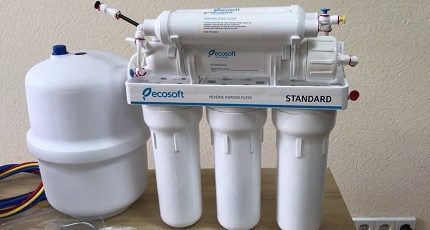
To determine the quality of water purified using a reverse osmosis system, use an electronic device - TDS-metr. With its help determine the level of salt content in water.
For tap water before treatment, this indicator can be 150-250 mg / l, and after treatment using reverse osmosis technology, the salinity is considered to be the norm in the range of 5-20 mg / l. If the amount of salts in purified water is more than 20 mg / l, it is recommended to replace the membrane.
Those who want to choose water filters used in various stages of purification will find a lot of useful information in the next article.
Individual elements of the system
The most expensive and basic element of the reverse osmosis system is the membrane. It is a microporous material twisted in one or more layers around a perforated plastic core. On top of the membrane is closed with a plastic protective cover, which is fixed by O-rings.
Water enters the membrane body and passes through a porous filler. In this case, pure water molecules penetrate through the porous core and then move into the storage tank.
But contaminants with some water cannot cross the membrane barrier. They exit the opposite end of the membrane block and are disposed of.
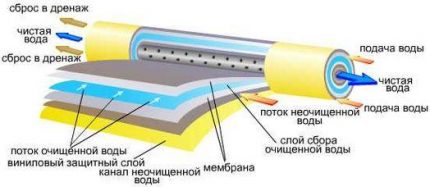
As previously mentioned, direct contact of the membrane with ordinary tap water can be detrimental. The fact is that its pores are very small - only 0.0001 microns. The membrane cannot be removed, rinsed and reinstalled, as is done with some mechanical coarse filters.
An expensive item has to be completely replaced every two to three years. The term may vary depending on the operating conditions of the membrane: pressure in the water supply system, the amount and nature of contamination, water temperature, etc.
In some cases, the membrane can last five years or even longer, sometimes it is necessary to replace it after the first year of operation.
An important factor in this is the presence of pre-filters: two mechanical and one carbon. The first mechanical filter cuts off all insoluble contaminants whose size exceeds 0.5 microns. It can be grains of sand, particles of rust and other similar “mechanics”.
Next, water passes through carbon filter, which retains the molecules of various chemicals: chlorine compounds, which are invariably present in tap water, as well as heavy metals penetrated from the soil by pesticides, dissolved iron and other inclusions of organic or inorganic origin.
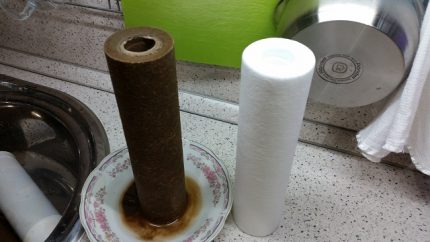
After that, another mechanical single-micron filter completes the preliminary water treatment.As a result, water containing no contaminants that can damage membrane filter or overcome it.
These filters need to be replaced regularly every few months. But they cost several orders of magnitude cheaper than the membrane, and timely replacement can significantly extend its service life.
An accumulative tank is used to collect purified water. Its capacity can vary between 4-12 liters, it depends on the performance of the system. High quality steel is commonly used to produce such tanks. Outside the container is covered with a layer of durable enamel. A silicone gasket is installed inside, which divides the tank into two parts.
On one side of the gasket there is collected clean water, on the other - air. The amount of air in the chamber can be changed using a nipple located on the air side of the tank.
Air creates additional pressure inside the storage tank, which helps to move water to the tap with the necessary pressure. Of course, there is an outlet on the tank for connecting a hose through which drinking water moves to the tap.
Usually this faucet is installed on a sink. Even if the water supply through the water supply system is interrupted for some reason, a certain amount will remain in the tank, which will make the problem less acute. In this situation, to completely empty the storage tank, it makes sense to increase the pressure by pumping air through a nipple connection.
The degree of water purification using a reverse osmosis system brings it closer to distilled. In this case, the membrane passes molecules of oxygen dissolved in water, which increases its quality.
To improve the taste, water can be passed through a mineralizer or other modules. But it is suitable for drinking and immediately after passing the membrane cleaning. There is no need to boil it for drinking.
As an additional module that improves the quality of drinking water, reverse osmosis systems can be supplemented with a mineralizer or bioceramic cartridge. The mineralizer is used to enrich water with useful substances such as calcium, sodium, magnesium, etc.
All these minerals have a positive effect on the human nervous and cardiovascular systems, prevent the occurrence of many dangerous diseases, stimulate the normal level of blood acidity, etc.
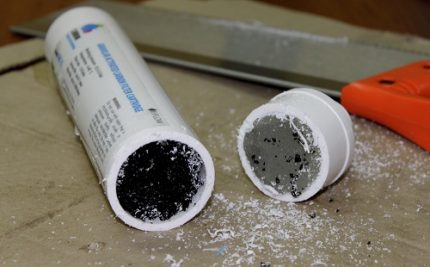
The bioceramic cartridge acts differently. As part of its “filling” there are balls consisting of baked clay and pieces of tourmaline. This mineral is capable of exerting an extremely beneficial effect on water. It contributes to a change in the structure of water, which ultimately has a beneficial effect on the endocrine system and strengthening immunity.
Over time, the resource of such additional modules is exhausted, they require periodic replacement. Therefore, it is more convenient to use a crane with two valves.
Water is supplied directly from the drive to one valve, and to the second through the mineralizer. The water enriched with useful substances is used only for drinking, and is prepared on water without minerals.
About the rules of choosing a water purification system for an autonomous water supply system of a private house, one of popular articles our site.
Advantages and disadvantages of reverse osmosis
A high degree of purification and guaranteed quality of drinking water are the main advantages of reverse osmosis systems. It is estimated that the content of foreign substances in the water purified by this method is ten times lower than the minimum allowable rate. The design features of the membrane prevent accidental ingress of contaminants into the stream of purified water.
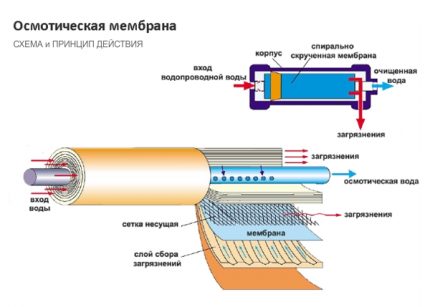
Such water can be safely consumed for drinking and cooking, it can be given to children and pets. For health, water obtained by reverse osmosis technology is much more beneficial than boiled tap water. Aquarists use such water to supplement the volume of aquariums without settling.
Despite a more complex design compared to conventional household filters, installation of such systems performed without any problems. Everything needed for installation is usually supplied. Almost all elements or their modifications can be purchased separately.
The system does not take up too much space, most often the tank and a set of filters with a membrane are fixed directly under the sink. A compact faucet for drinking water, mounted on the sink, usually fits perfectly into the interior.
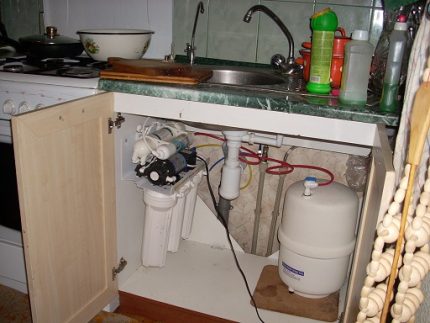
The main disadvantage of reverse osmosis systems is the high initial cost of the kit. Further system maintenance will also require the cost of replacing filter cartridges, but they cost significantly less.
Every few years, it will be necessary to replace the membrane, the price of which can be about $ 50. But calculations show that as a result, the cost of clean water will cost the family less than buying drinking water from third-party suppliers.
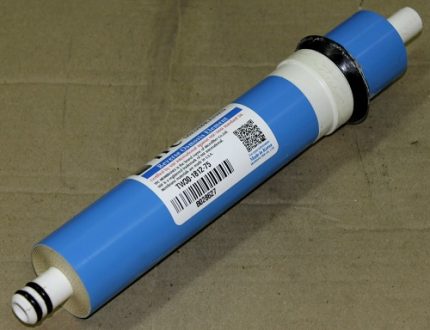
Another feature of the reverse osmosis system, which with a stretch can be considered a drawback, is low productivity. The purified water seeps through the membrane very slowly, the standard membrane capacity is about 150-300 liters per day.
Moreover, more than half of the water coming from the water supply goes to the sewer, which to some extent affects the amount of utility bills.
But if the volume of the storage tank is selected correctly, then problems can arise for a short time only when the system starts immediately after installation or after a long period of inactivity with an empty storage tank.
Recommended related article: Reverse osmosis: the harm and benefits of membrane purification of tap water.
How to choose a suitable model?
The sizes of elements of reverse osmosis systems usually correspond to a certain standard, but not always. Using a system with standard parameters gives a wider selection of replaceable elements. Practice shows that products of domestic production, which are cheaper than foreign analogues, do not differ much in quality from the latter.

Of course, it is better to make a purchase directly from the manufacturer, from a verified dealer or in a reliable store. Good reverse osmosis systems have a technical certificate, an official guarantee, detailed installation and operation instructions, as well as quality certificates.
The dimensions of the storage tank depend on the needs of the family, as well as on the size of the space in which the device will be installed. The maximum capacity will be appropriate for the house in which a large family lives, the most popular are tanks of about 8-10 liters.
An important indicator is working pressure in the water supply system. The optimal indicator is 2.8 bar. If the pressure is too low, it makes sense to buy a reverse osmosis system with a built-in pump that will provide sufficient pressure for drinking water. If the pressure in the water supply is much higher, you will need to install a pressure reduction gear.
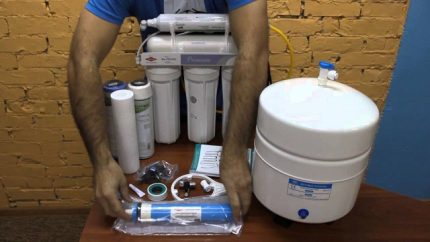
The most careful attention is required by the membrane of the reverse osmosis system. This element must be of consistently high quality and with suitable performance. For a small family, the optimal figure is about 7 liters per hour.
It makes no sense to overpay for a more productive membrane if it is not necessary. For comparison: a device with a capacity of 15 liters per hour easily meets the needs for clean water of a small catering business.
A kit is considered standard, which includes five main cleaning steps: three pre-filters, a membrane and a post-filter. The content of this last item may vary.
Mineralizer and bioceramic cartridge have already been mentioned. The installation of a cartridge containing coconut shell, activated carbon and silver ions is also considered a popular solution.
These substances disinfect water, additionally purify it and give it a pleasant taste. Another interesting option for post-treatment of water is an ultraviolet disinfectant. Some models of reverse osmosis systems allow you to use several different cartridges at the same time.
Conclusions and useful video on the topic
Video # 1. A general overview of the principles of functioning of reverse osmosis systems can be found here:
Video # 2. This video describes in detail the operation of such a system using the example of the Geyser Prestige M model:
Video # 3. This video allows you to compare the features of the operation of flow filters and reverse osmosis systems:
Reverse osmosis systems are a reliable and convenient way to provide your home with enough clean drinking water. Yes, the prices of such devices remain high, but they more than pay off, since clean drinking water reduces the risk of many diseases and improves the quality of life.
Want to talk about your personal experience in installing and operating a reverse osmosis system? There is information that you want to share with us and visitors to the site, have questions? Please leave comments in the block located under the text of the article.

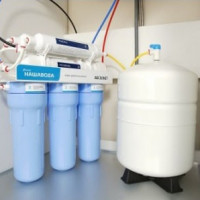 Reverse osmosis: the harm and benefits of membrane purification of tap water
Reverse osmosis: the harm and benefits of membrane purification of tap water 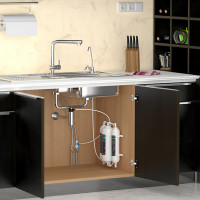 DIY reverse osmosis: step-by-step assembly and installation instructions
DIY reverse osmosis: step-by-step assembly and installation instructions 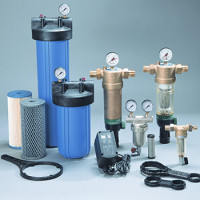 Filters for rough and fine water purification: overview of types + installation and connection rules
Filters for rough and fine water purification: overview of types + installation and connection rules  Water purification systems for a country house: filter classification + water purification methods
Water purification systems for a country house: filter classification + water purification methods 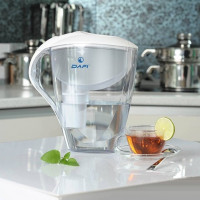 Water purification filter for a summer residence: selection tips + an overview of the best brands
Water purification filter for a summer residence: selection tips + an overview of the best brands 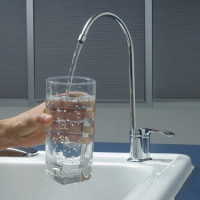 How to choose a filter for water: we figure out which filter is better + manufacturers rating
How to choose a filter for water: we figure out which filter is better + manufacturers rating  How much does it cost to connect gas to a private house: the price of organizing gas supply
How much does it cost to connect gas to a private house: the price of organizing gas supply  The best washing machines with dryer: model rating and customer tips
The best washing machines with dryer: model rating and customer tips  What is the color temperature of light and the nuances of choosing the temperature of the lamps to suit your needs
What is the color temperature of light and the nuances of choosing the temperature of the lamps to suit your needs  Replacement of a geyser in an apartment: replacement paperwork + basic norms and requirements
Replacement of a geyser in an apartment: replacement paperwork + basic norms and requirements
Two years ago I decided to purchase a water filter.And I decided to go online to see which is better to choose. Oh my god, how much information fell on my head. Price was not a problem for me. I wanted to buy it with reverse osmosis, but they say that distilled water is obtained there. It scared me away. I bought the usual “Aquaphor”. Now I’m thinking again.
I still remember how I chose a water filter. There was no exact information anywhere: which is better and which is worse. Some said reverse osmosis is a scam to get more money. I thought a lot whether to buy or not. And then it turned out that I did not have enough space under the sink, and this made it easier for me to choose. Therefore, I took a regular, inexpensive filter, which I use and sow the day.
The second year I use Aquaphor Osmo 50. The water is clean and tasty. There is no scale at all in the kettle.
Happy as an elephant.
Damn, something about 50 bucks you bent. Maybe it's some kind of expensive membrane model? Seriously, I saw it on sale at the same aquaphor for 1,500. And by the way, some have such bad water that they change this membrane once a year.
Yes, indeed the frequency of membrane replacement directly depends on the quality of the water. The price of this item depends on the model. It’s clear that in a system for 200 dollars a membrane will not cost 50. But in a reverse osmosis system for 1000+ dollars this could well be. So in this regard, not everything is so simple.
Quote: “For health, water obtained using reverse osmosis technology is much more beneficial than boiled tap water.”
Oh bah. Do not even understand what to write. What usefulness of boiled, distilled water can generally be said. Good health and boiled water are NOT compatible. When boiling, water changes its crystal structure completely - it is DEAD water. Drink boiled water - kill your immunity clean. Everyone who drinks only boiled water has a bouquet of chronic diseases, complications of the WHOLE organism and does not understand the reason where they got all this from.
Are you watching films on REN TV? Or the same film supposedly from the Japanese about the wonders of the water? It has long been denied that this is all scientifically unsubstantiated.
However, in some ways you are right. Drinking perfectly pure water is not very good. For example, those same tourists who go hiking in the winter and melt snow as water, they should always take electrolytes and mineral additives in powders with them. Because you can’t live long on melt snow and you can undermine your health greatly.
Another point is that often in filtration systems they put various “concentrators” - mineralizers, which serve just for these purposes. It is simply important to fully study everything in advance so as not to poison the sweat. After all, no one will check after you what you drink there.
Don't you find it ridiculous that boiled water is “dead”? This automatically means that we consume food and drinks prepared with dead water! This is far from the case!
Many also talk about distilled water and purified using reverse osmosis. But no need to mislead people, purified water does not contain impurities and is absolutely safe. Yes, there are no minerals and salts in it, but all this the human body can get from other food products.
Normal system, of course the water is super. You can make it ice in the refrigerator, in a clean dish, of course, and there will be no sore throat - it is sterile.
“The main disadvantage of reverse osmosis systems is the high initial cost of the kit” ... A controversial statement. Health is more important!
The most important drawback of such systems is the inability to restore the optimal salt content balance even with the help of mineralizers (see attachment). And without salts of general hardness (Ca2 + and Mg2 + ions), it will be bad for us. Over time, osteoporosis, etc. will appear.
P.S.Since I am a chemical analyst, after cleaning the water in a system with a mineralizer, I immediately made an analysis of the total hardness: the result is <0.02 mEq / l, i.e. almost distillate. The physiological norm according to SanPin for packaged water is a minimum of 1.5 mEq / l (see file).